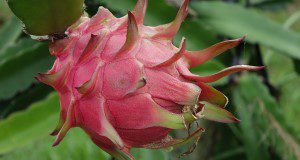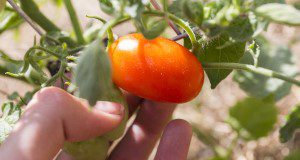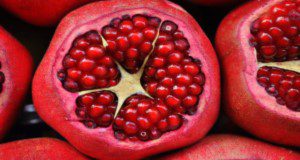Dragon fruit, also known as pitahaya, pitaya, and strawberry pear, is a group of vine-like, climbing cacti. In south Florida, production of dragon fruit has been steadily increasing since the 2000s, and growers in Florida consider dragon fruit as a potential alternative fruit crop to avocado and citrus, two economically important fruit crops largely impacted by laurel wilt and huanglongbing, respectively. This new 4-page article focuses on the symptomology and epidemiology of stem and fruit canker, a prevailing disease on dragon fruit. Suggested management strategies for the disease are also discussed based on recent studies conducted in south Florida. Written by Cheng-Fang Hong, Shouan Zhang, Romina Gazis, Jonathan H. Crane, and Jeff Wasielewski, and published by the UF/IFAS Plant Pathology Department.
https://edis.ifas.ufl.edu/pp355
Tag: disease management
Target Spot of Tomato in Florida
Fresh-market tomatoes bring in $400-$500 million annually as the third most valuable crop in the state. Defoliation and fruit damage from target spot, caused by Corynespora cassiicola, can have serious economic implications for growers. This new 5-page publication of the UF/IFAS Plant Pathology Department, written by Keevan MacKenzie, Jessica Chitwood, Gary Vallad, and Sam Hutton, reviews symptoms and epidemiology of the disease and provides current management recommendations.
https://edis.ifas.ufl.edu/pp351
Diseases of Pomegranate (Punica granatum) in Florida
Pomegranate production is becoming increasingly popular in the Southeast. Florida’s humid subtropical to tropical climate is favorable for not only pomegranate tree establishment, but also several diseases. This new 5-page publication of the UF/IFAS Plant Pathology Department, written by Katia V. Xavier, Achala N. KC, and Gary E. Vallad, describes the various diseases affecting pomegranate in Florida and provides some management recommendations.
https://edis.ifas.ufl.edu/pp349


